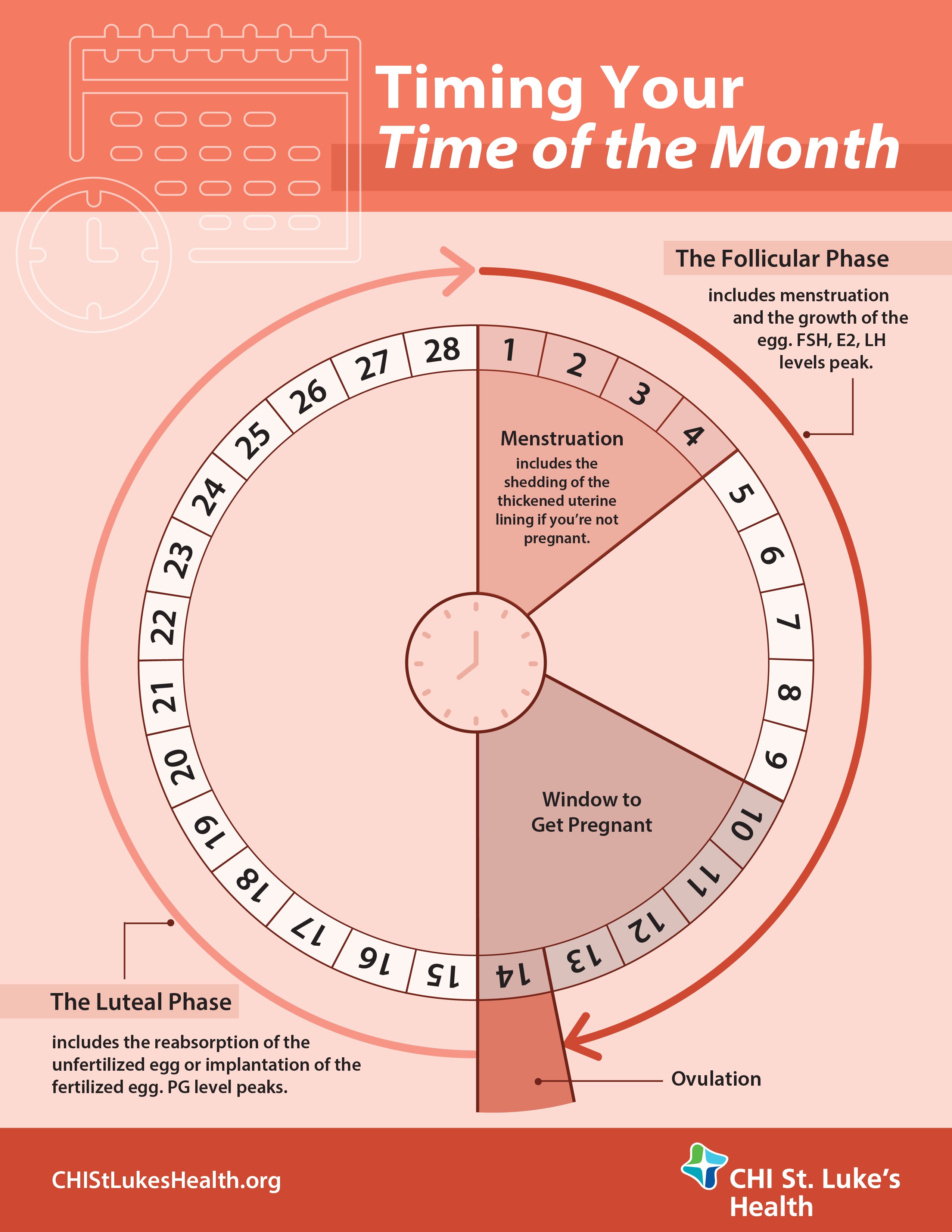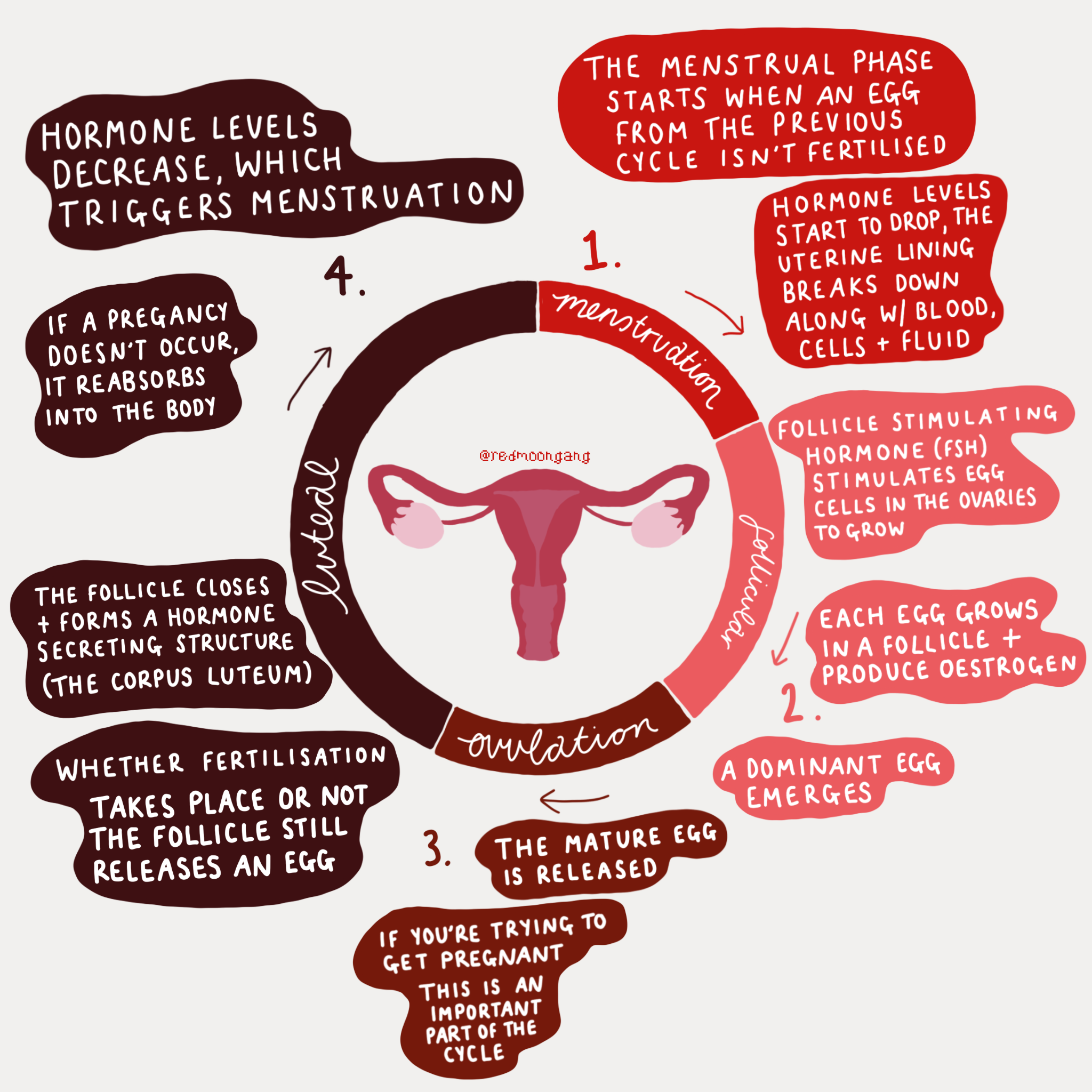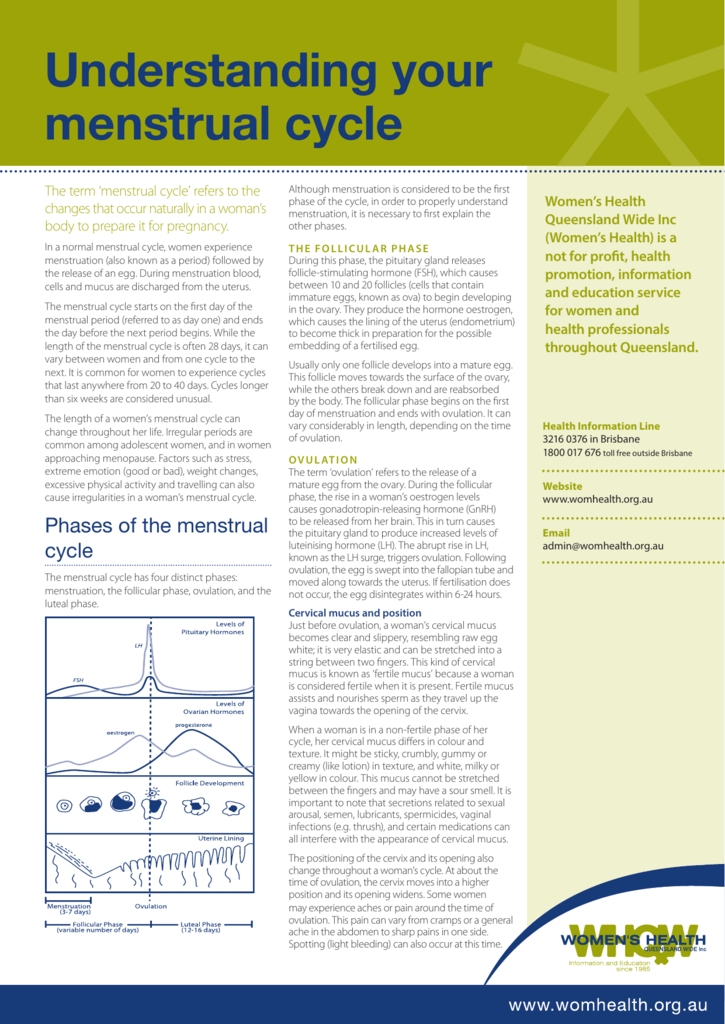The menstrual cycle is a fascinating and complex process that plays a crucial role in the reproductive health of those with ovaries. Understanding this cycle can empower individuals to take control of their health, recognize normal patterns, and identify potential issues. The menstrual cycle typically lasts about 28 days, although it can range from 21 to 35 days in different individuals. It's important to note that this cycle is driven by a delicate interplay of hormones, which orchestrate a series of bodily changes. By understanding the key phases and hormonal shifts, you can better appreciate what your body is doing and why. Let’s dive deeper into the different phases of the menstrual cycle and uncover all the intriguing details!
The Phases of the Menstrual Cycle

The menstrual cycle is divided into four distinct phases: the menstrual phase, the follicular phase, the ovulatory phase, and the luteal phase. Each of these phases is marked by specific hormonal changes and physiological events that prepare the body for potential pregnancy. Here's a closer look at each phase:
- Menstrual Phase (Days 1-5)
This is the phase when menstruation occurs. The lining of the uterus, which had thickened in preparation for a potential pregnancy, is shed if no fertilization takes place. Common symptoms during this phase include cramps, bloating, and mood swings.
- Follicular Phase (Days 6-14)
The body begins to prepare for a new egg to be released. The pituitary gland releases Follicle Stimulating Hormone (FSH), which stimulates the growth of follicles in the ovaries. One follicle will become dominant, leading to further estrogen production, thickening the uterine lining.
- Ovulatory Phase (Day 14)
This is the exciting phase when the egg is released from the ovary. A surge in Luteinizing Hormone (LH) triggers this release. The cervical mucus also becomes more slippery to aid sperm travel, making this the most fertile time in the cycle.
- Luteal Phase (Days 15-28)
After the egg is released, the ruptured follicle transforms into the corpus luteum, producing progesterone to maintain the uterine lining. If the egg is not fertilized, hormone levels drop, leading to the breakdown of the uterine lining and the beginning of the menstrual phase.
Understanding these phases can help individuals track their cycles, recognize symptoms, and even plan for pregnancy or contraception effectively. Knowledge is power when it comes to your reproductive health!
3. Hormonal Changes During the Cycle

The menstrual cycle is a fascinating interplay of hormones, acting like a conductor guiding an orchestra. These hormonal changes are not only responsible for preparing the body for potential pregnancy but also influence various physical and emotional aspects as you go through the month.
Typically, the menstrual cycle lasts about 28 days, but it can vary from 21 to 35 days in different individuals. The cycle can be divided into four main phases, during which the key hormones fluctuate:
- Follicular Phase (Days 1-13): This phase begins on the first day of menstruation. Follicle-stimulating hormone (FSH) rises, stimulating the growth of follicles in the ovaries. Estrogen levels also start to increase, helping to thicken the uterine lining.
- Ovulation (Day 14): Estrogen peaks, triggering a surge of luteinizing hormone (LH). This surge leads to the release of a mature egg from the ovary - this is ovulation!
- Luteal Phase (Days 15-28): After ovulation, the ruptured follicle transforms into the corpus luteum, which secretes progesterone. This hormone maintains the thickened uterine lining, preparing for a potential implantation of an embryo.
- Menstruation (Days 1-5 of the next cycle): If pregnancy doesn’t occur, hormone levels drop, leading to menstruation as the uterine lining sheds.
Understanding these hormonal fluctuations can help women anticipate mood swings, physical changes, and even cravings throughout the month. It's a natural rhythm that everyone with a menstrual cycle experiences, and being aware of these changes can empower individuals to better manage their health and well-being.
4. Common Myths About Menstrual Cycles

When it comes to menstrual cycles, misinformation runs rampant! Let's debunk some of the most common myths that can leave people confused or concerned:
| Myth | Fact |
|---|---|
| Myth 1: You can't get pregnant during your period. | Fact: While the chances are lower, it's still possible to conceive during your period, especially if you have a short cycle. |
| Myth 2: Menstrual cycles are always 28 days. | Fact: Cycle length can vary significantly among women; anything from 21 to 35 days is normal. |
| Myth 3: PMS is just an excuse for bad behavior. | Fact: Premenstrual syndrome (PMS) can cause real physical and emotional symptoms that affect daily life. |
| Myth 4: You don't need to worry about menstrual hygiene. | Fact: Proper hygiene is crucial during menstruation to prevent infections and maintain comfort. |
| Myth 5: Periods should be painful. | Fact: While some cramping is normal, severe pain isn't. If you're experiencing debilitating discomfort, consult a healthcare provider. |
In this era of information, it's essential to sift fact from fiction regarding the menstrual cycle. Empowering yourself with accurate knowledge not only fosters better health but also encourages open conversations about menstruation. Remember, understanding your body is a vital step toward nurturing your well-being!
Menstrual Cycle Irregularities
Understanding menstrual cycle irregularities can feel like uncovering a puzzle. Many women experience variations in their cycles at some point in their lives, and it’s essential to recognize what might be causing these changes.
First off, let’s define what we mean by "irregularities." A menstrual cycle is generally considered regular if it occurs every 21 to 35 days and lasts between 2 to 7 days. Anything outside this range can be classified as irregular. Here are some common types of irregularities:
- Amenorrhea: This is the absence of menstruation. It can be primary (when someone hasn't had their first period by age 15) or secondary (sudden stopping of periods after they’ve begun). Common causes can include pregnancy, stress, or hormonal imbalances.
- Oligomenorrhea: This refers to infrequent periods, typically more than 35 days apart. It can be due to conditions like polycystic ovary syndrome (PCOS) or extreme weight loss.
- Menorrhagia: This term describes heavy menstrual bleeding that lasts longer than a week. It might be linked to hormonal imbalances, fibroids, or other medical conditions.
- Irregular cycles: Some women find that their cycles vary in length over time, which can happen due to lifestyle changes, stress, or health conditions.
If you're experiencing irregularities, it's important to talk to a healthcare provider. They can help identify the underlying causes and recommend effective treatments or lifestyle changes to help restore balance.
Managing Menstrual Symptoms
Managing menstrual symptoms can turn what may feel like a daunting task into an empowering and manageable part of life. Many women experience a range of unpleasant symptoms during their periods, including cramps, mood swings, fatigue, and bloating. Let’s explore some effective strategies to alleviate these symptoms.
Firstly, understanding that self-care plays a vital role in managing menstrual symptoms can empower you. Here are some practical tips:
- Heat therapy: Applying a warm heating pad or hot water bottle to your abdomen can work wonders for cramps.
- Exercise: Regular physical activity boosts endorphins, which can help reduce pain. Even light exercises such as walking or yoga can make a difference.
- Dietary adjustments: Incorporating anti-inflammatory foods such as berries, fatty fish, and leafy greens while minimizing salt and sugar can alleviate bloating and discomfort.
- Hydration: Drinking ample water can help reduce bloating and improve overall wellbeing during your cycle.
- Herbal remedies: Some women find relief with herbal teas like chamomile or ginger tea, which can soothe cramps.
Additionally, if symptoms are severe or persistent, it might be time to consult a healthcare professional. They can provide options like hormonal birth control or prescription medication to manage symptoms more effectively.
Remember, every woman’s experience with her menstrual cycle is unique, and finding what works best for you is key!
Understanding the Menstrual Cycle
The menstrual cycle is a vital physiological process that occurs in individuals with a uterus, typically lasting about 28 days, although it can range from 21 to 35 days. This cycle is divided into four main phases: the menstrual phase, the follicular phase, the ovulation phase, and the luteal phase. Understanding each phase can help individuals recognize what their bodies are going through, leading to better health and wellness.
| Phase | Duration | Description |
|---|---|---|
| Menstrual Phase | 3-7 days | The shedding of the uterine lining, which results in menstrual blood flow. |
| Follicular Phase | 7-10 days | The pituitary gland releases FSH, stimulating the ovaries to develop follicles. |
| Ovulation Phase | 1-2 days | The mature egg is released from the ovary, usually around day 14. |
| Luteal Phase | 10-14 days | The body prepares for a potential pregnancy; if fertilization doesn't occur, it leads back to the menstrual phase. |
Throughout the menstrual cycle, hormones such as estrogen and progesterone fluctuate, causing various physical and emotional changes. These can include mood swings, cramps, bloating, and breast tenderness. By tracking your cycle, you can gain insight into your health, manage symptoms more effectively, and even optimize your reproductive planning.
Knowing your cycle can also assist in identifying any irregularities that may warrant professional consultation, ensuring that you maintain optimal reproductive health.
Conclusion: The Importance of Understanding Your Menstrual Cycle
Awareness of your menstrual cycle is crucial for managing symptoms, planning for pregnancy, and recognizing potential health issues, empowering you to take charge of your reproductive health.










